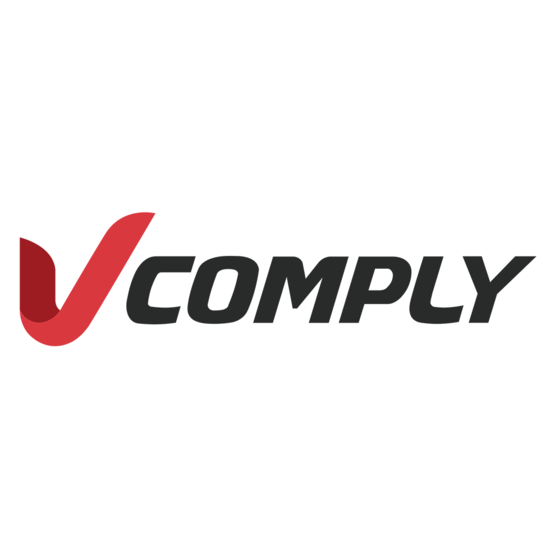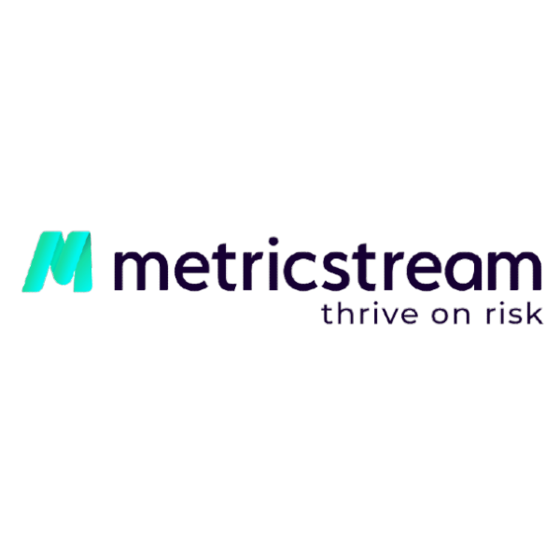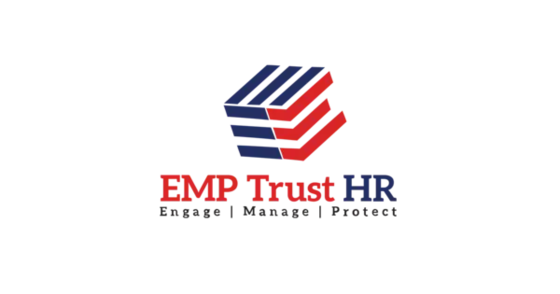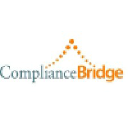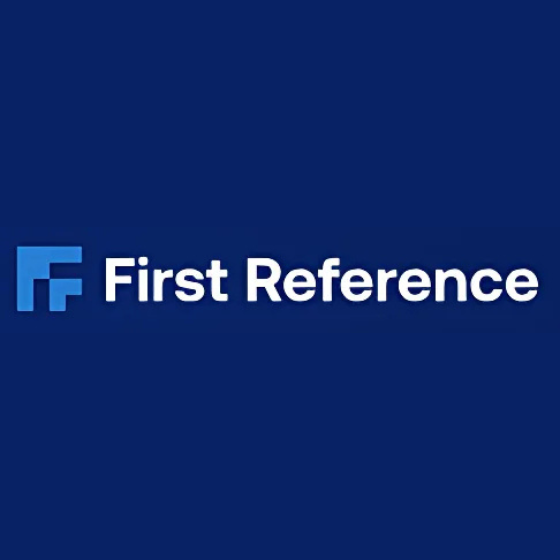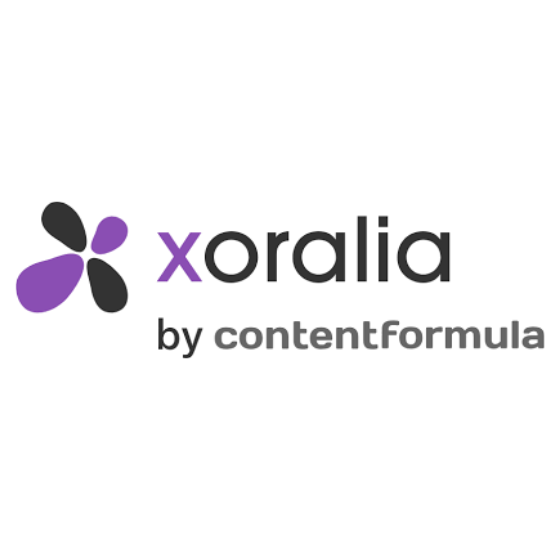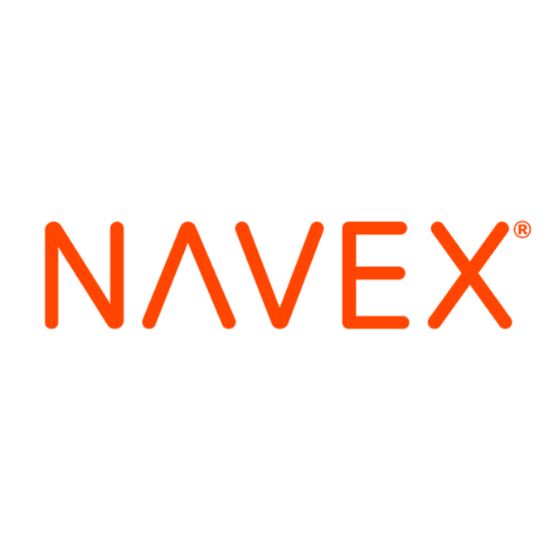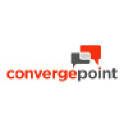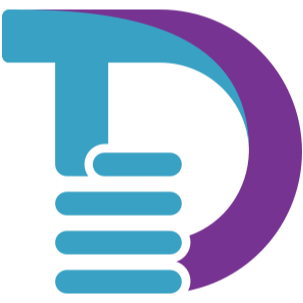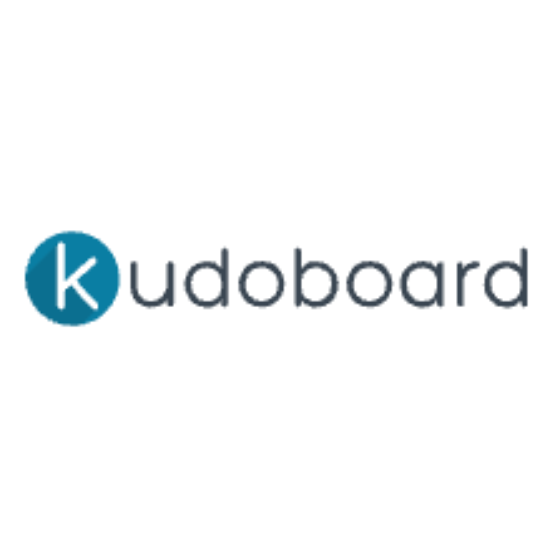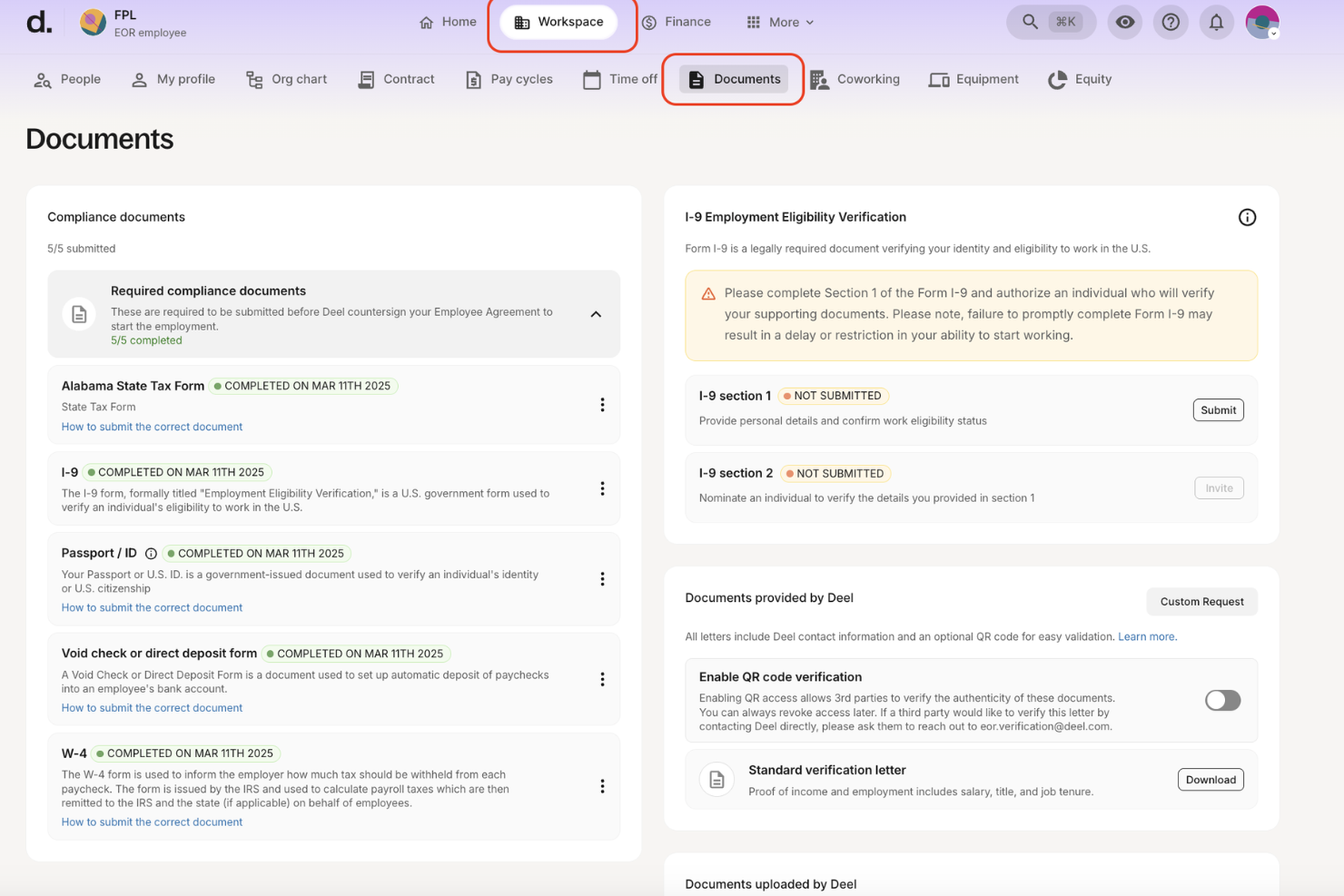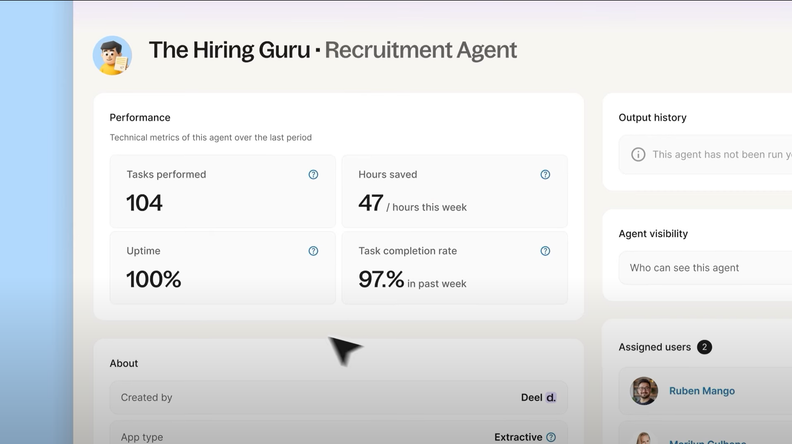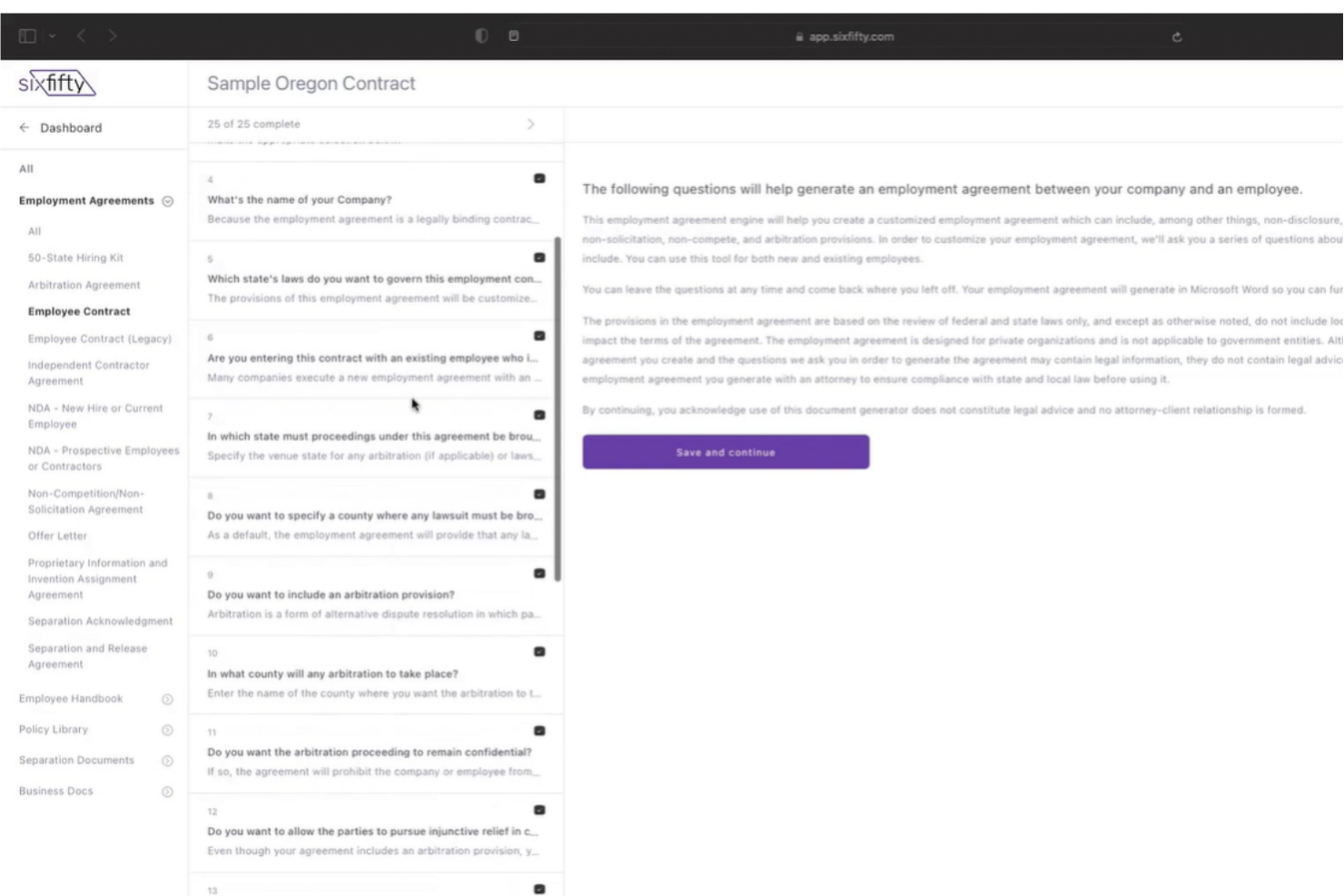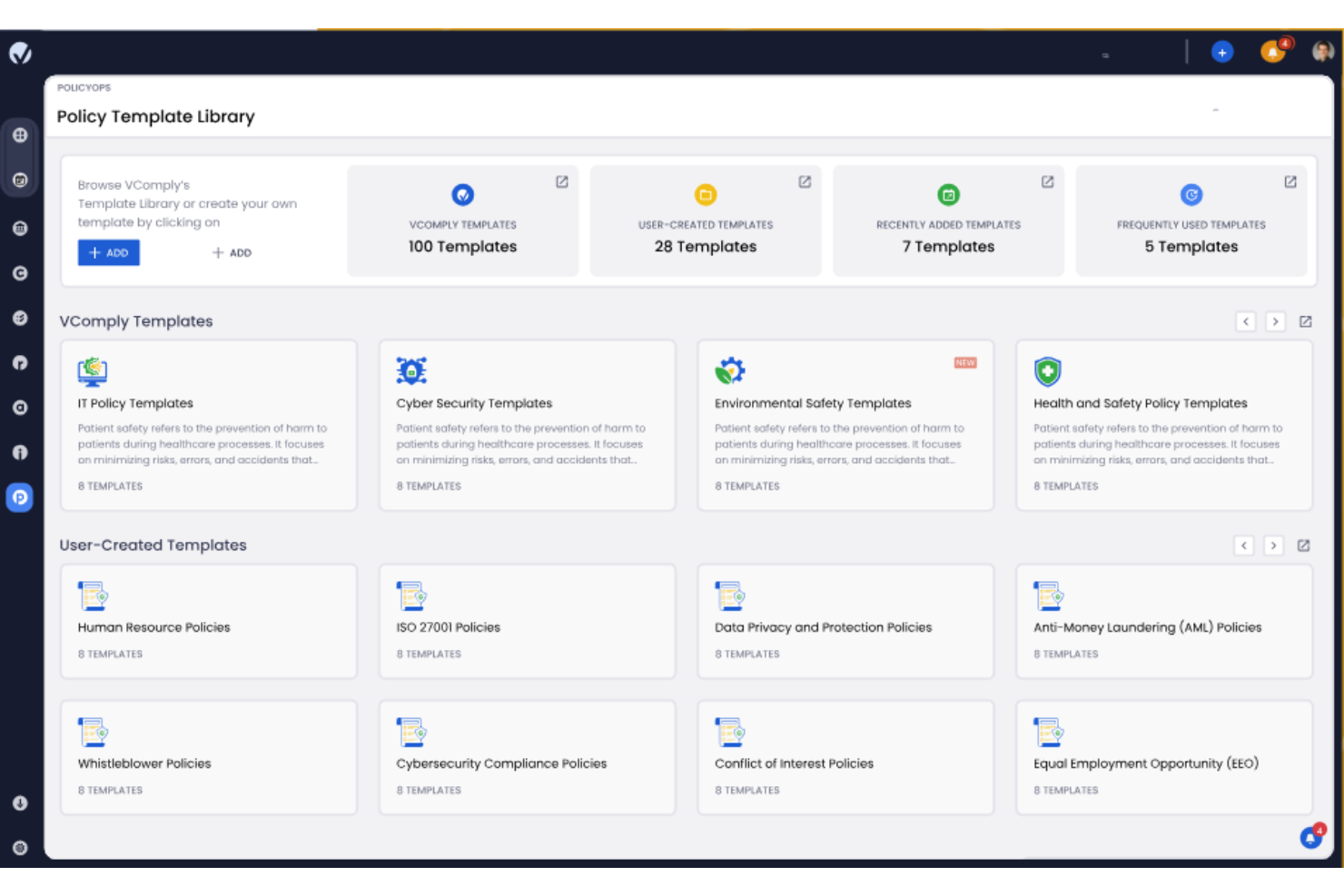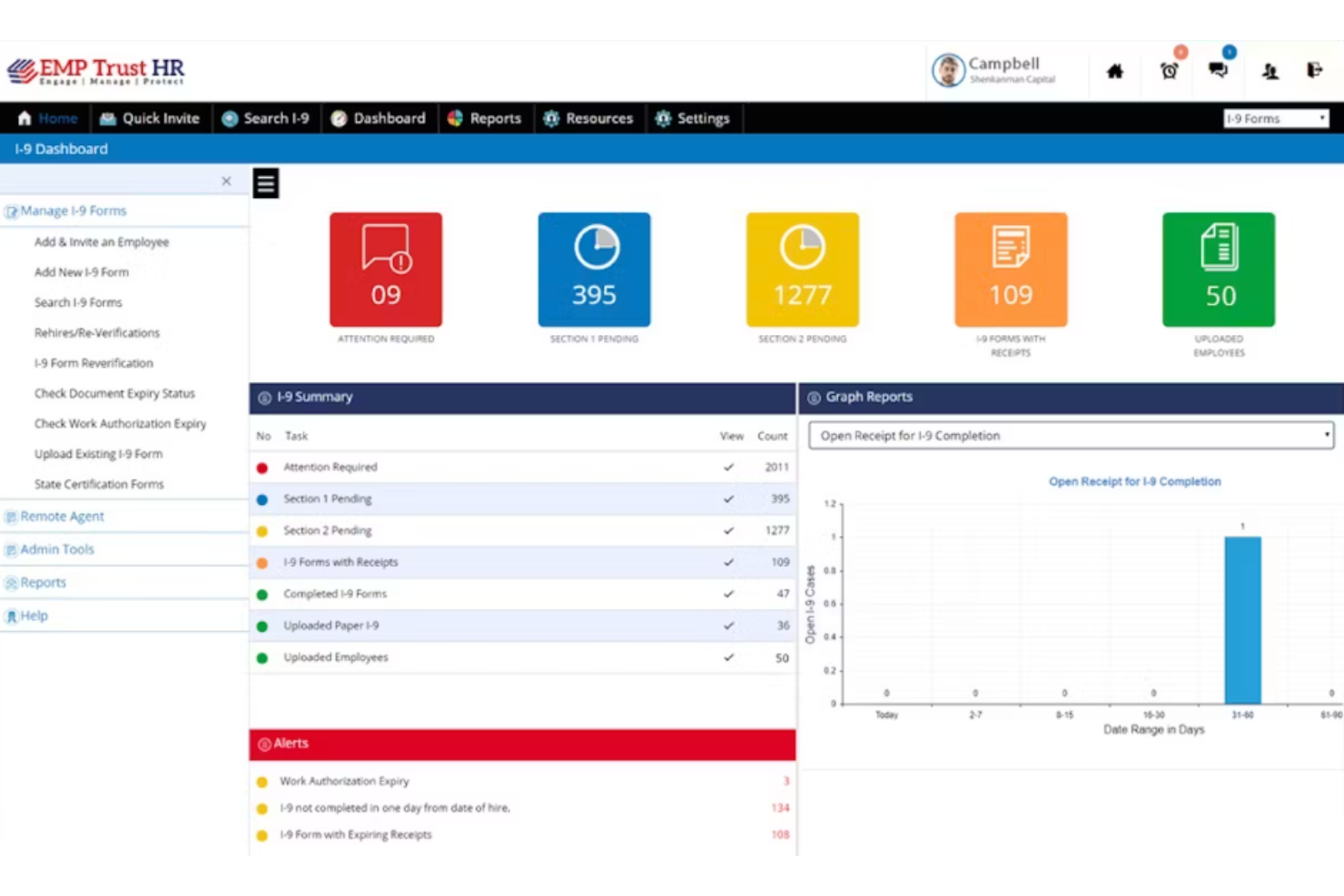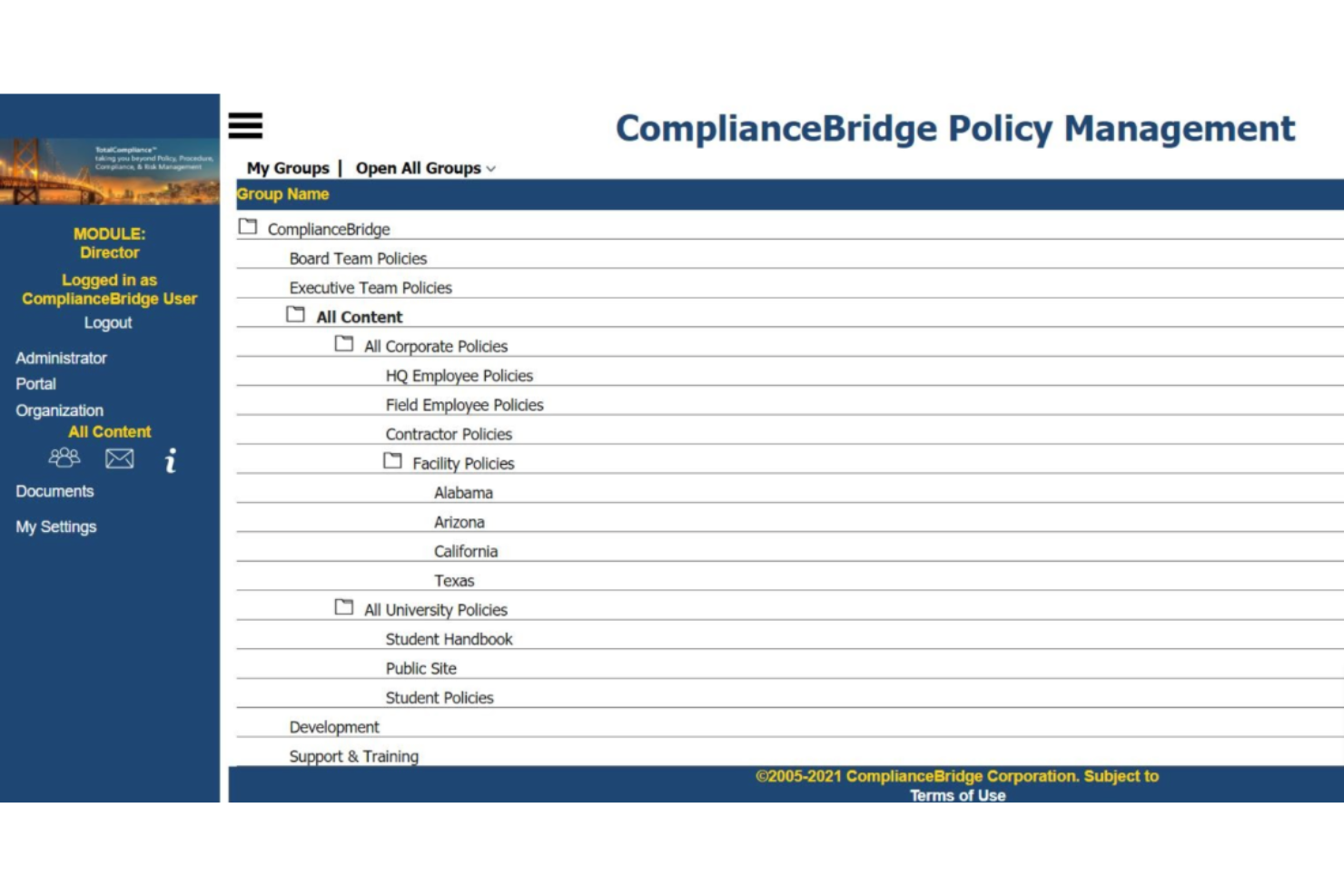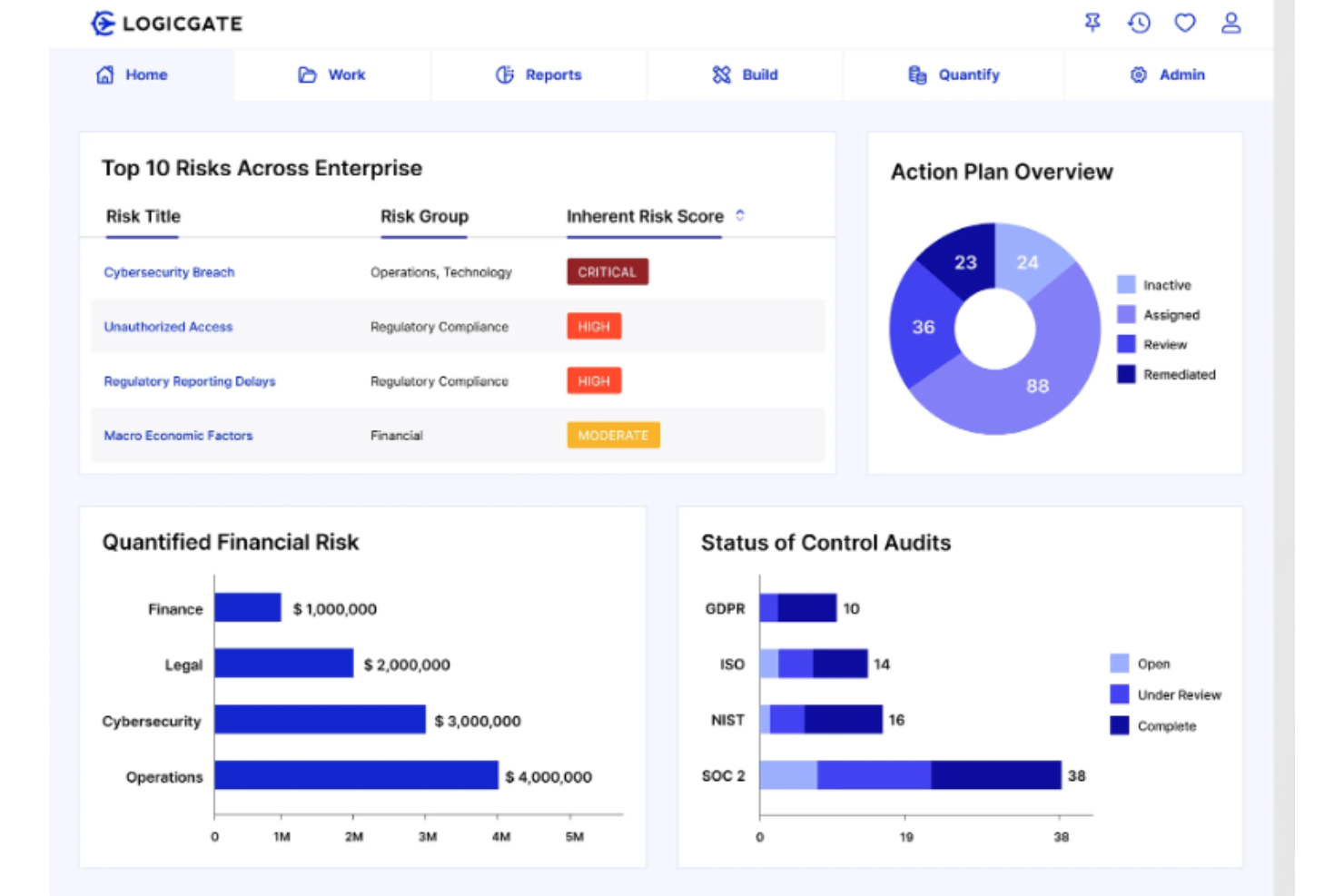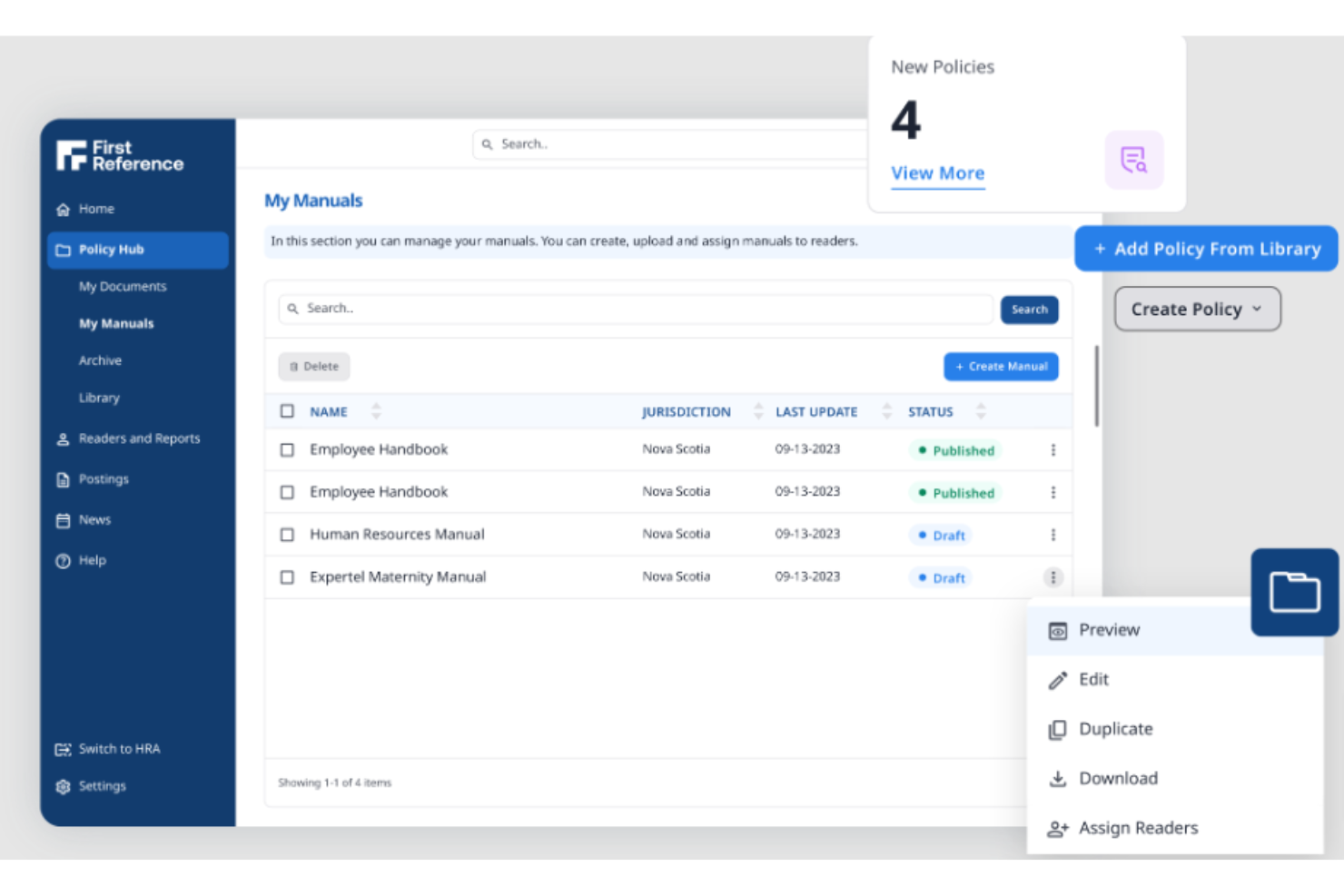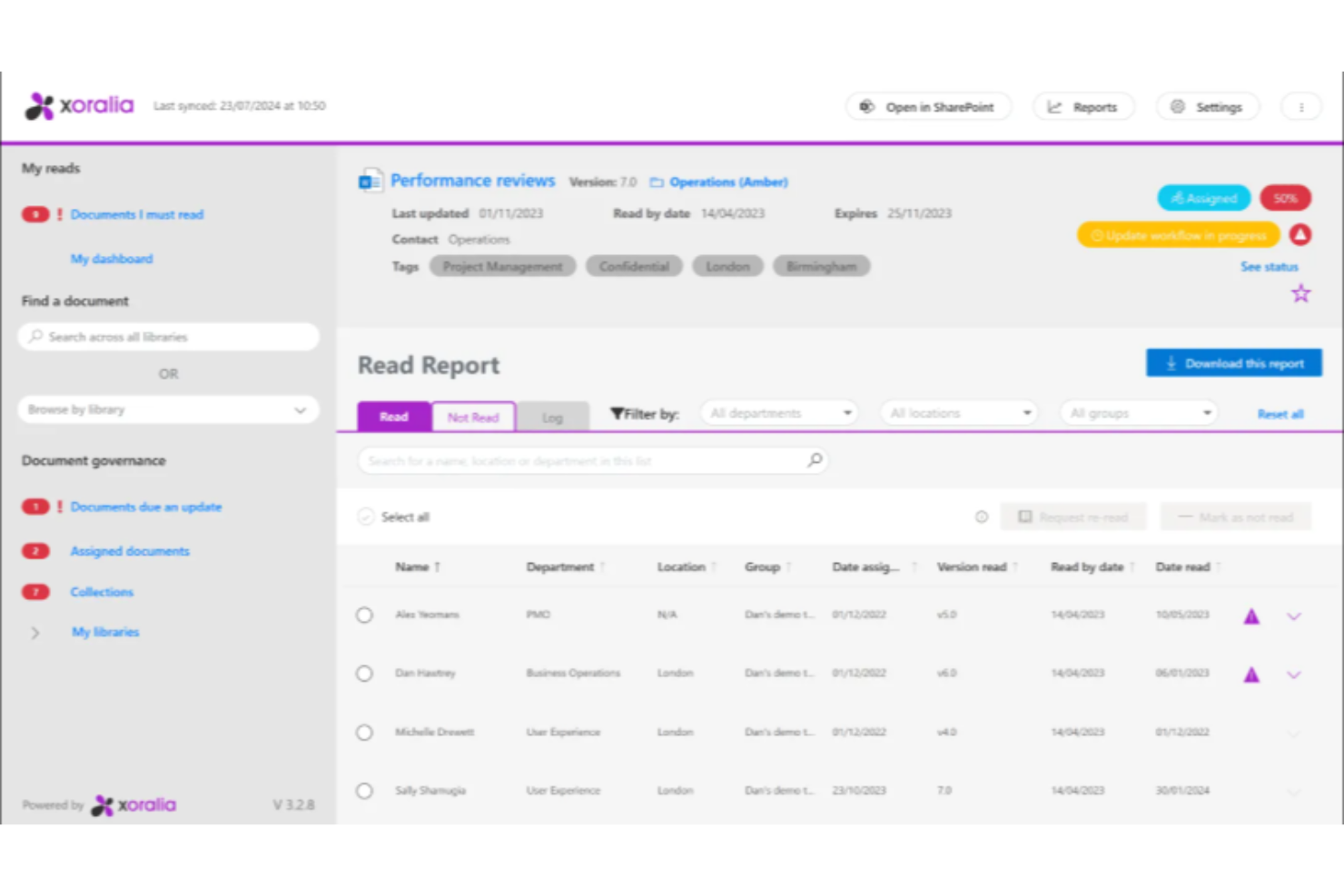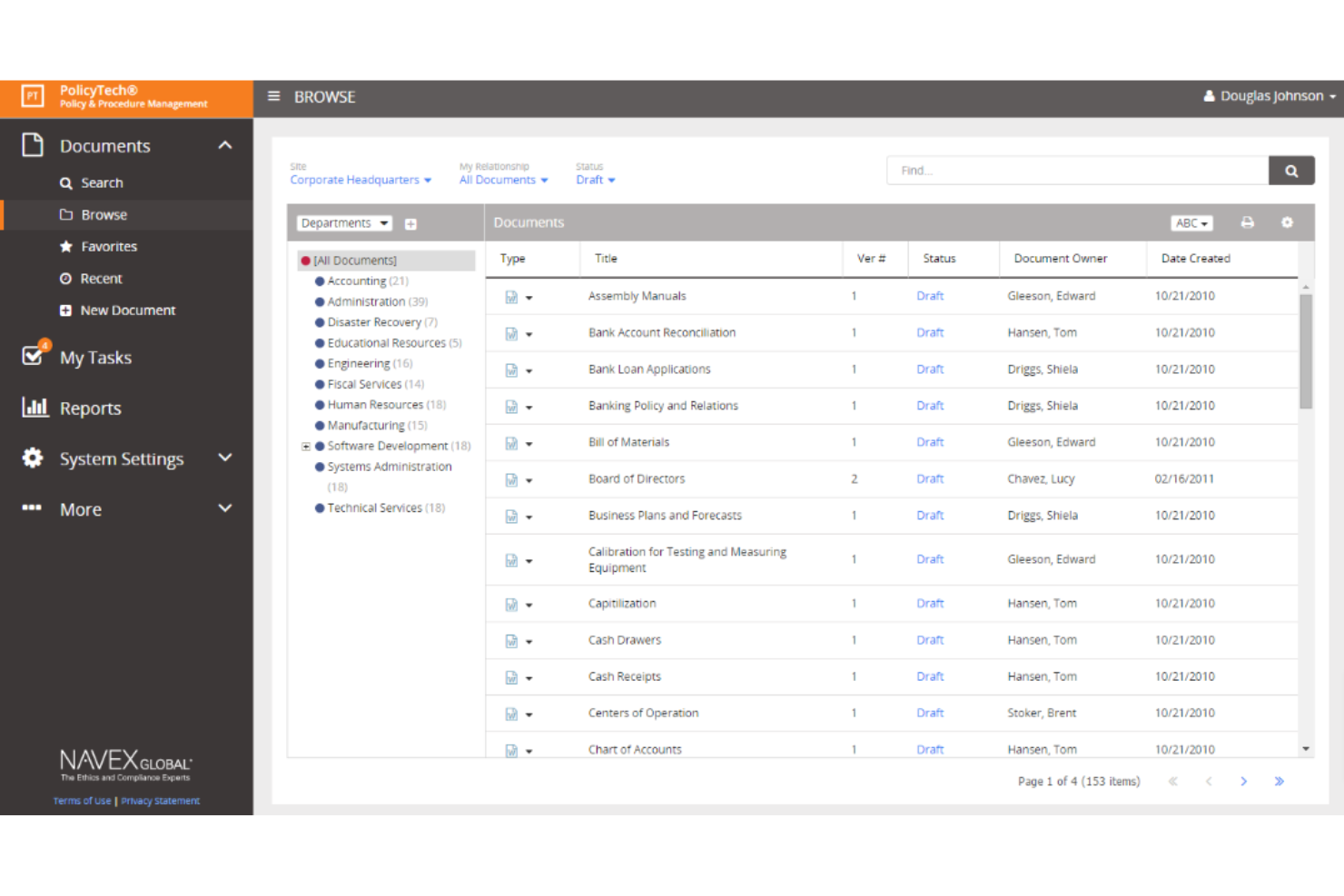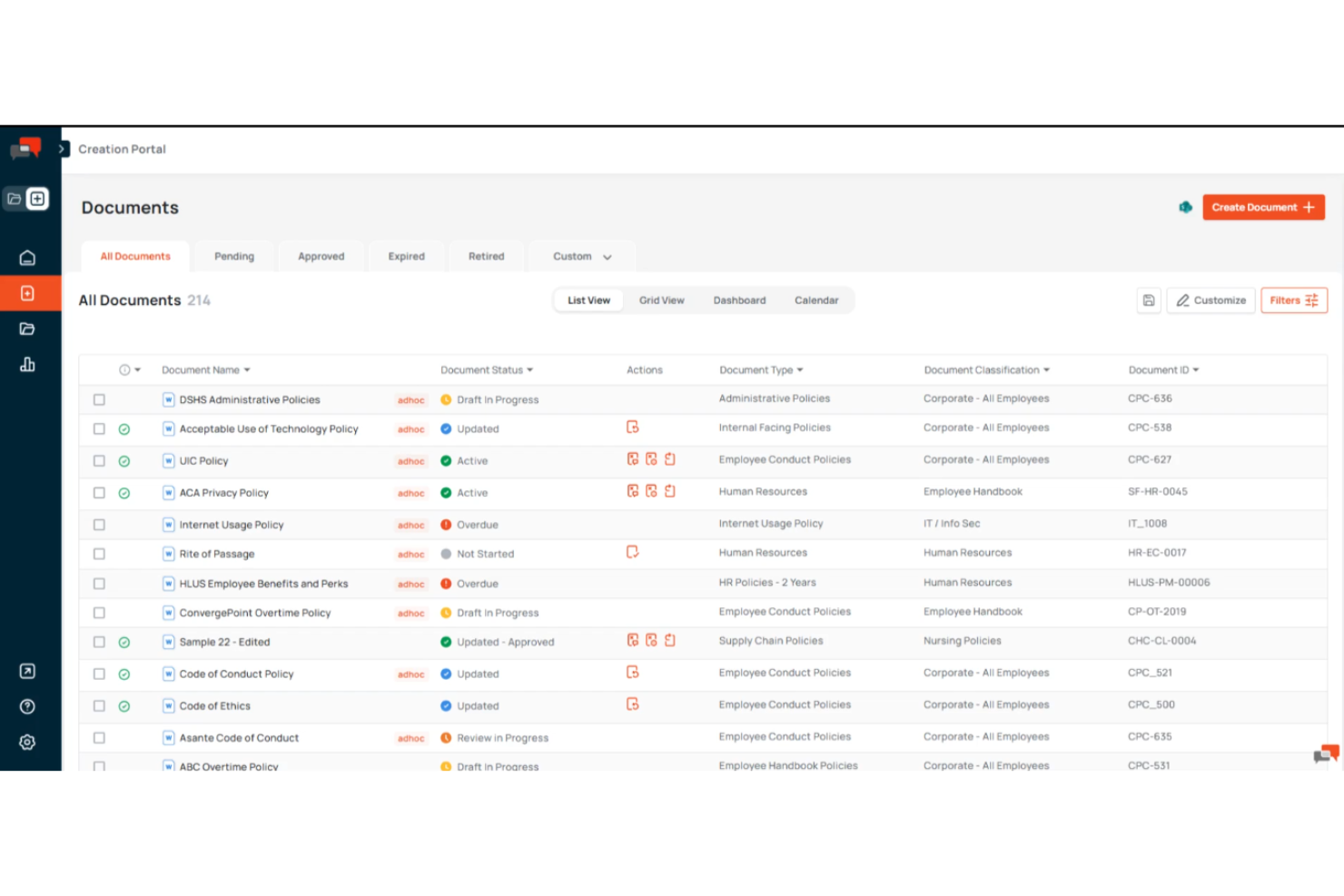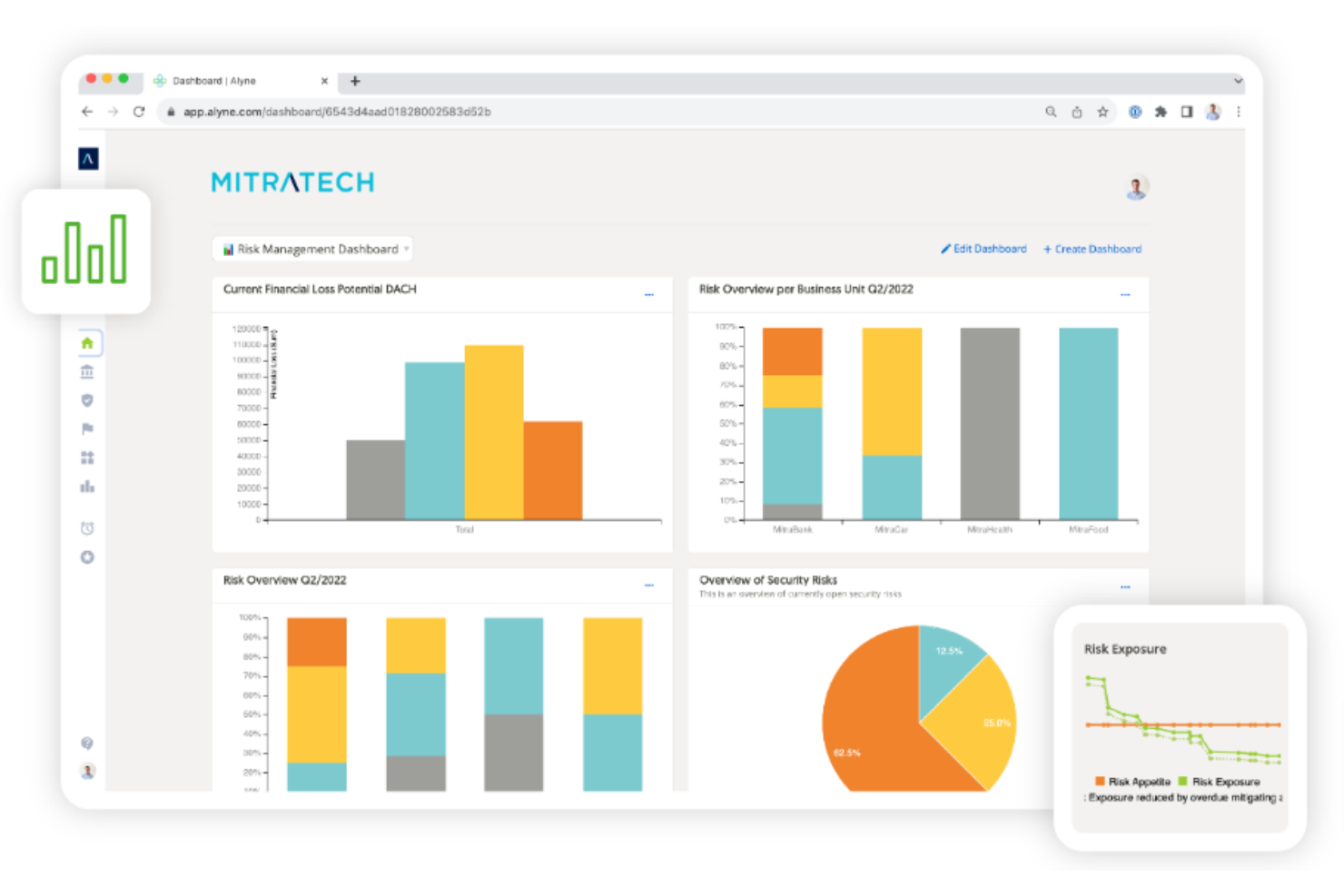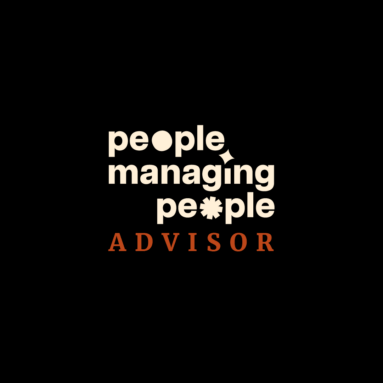Best Policy Management Software Shortlist
Here's my pick of the 14 best software from the 22 tools reviewed.
The best policy management software makes it easy to keep your HR policies updated, acknowledged, and compliant—without chasing paperwork or losing sleep over audits. If you're stuck managing policies through email threads, disconnected docs, or outdated systems, you're not alone. These methods leave too much room for error, delay, and non-compliance.
After spending nine years in HR managing internal policy documents myself, I know just how manual, messy, and high-stakes this part of the job can be. That experience now fuels my work as a software reviewer, evaluating tools that actually solve the day-to-day challenges HR teams face.
In this article, I’ll share the best policy management software for HR professionals, highlighting platforms that help you centralize policies, automate version tracking, collect employee acknowledgments, and ensure you're always aligned with the latest regulations.
Why Trust Our Software Reviews
We’ve been testing and reviewing HR management software since 2019. As HR professionals ourselves, we know how critical and difficult it is to make the right decision when selecting software. We invest in deep research to help our audience make better software purchasing decisions.
We’ve tested more than 2,000 tools for different HR use cases and written over 1,000 comprehensive software reviews. Learn how we stay transparent, and take a look at our software review methodology.
Best Policy Management Software Summary
This comparison chart summarizes pricing, trial, and demo details for my top policy management software selections to help you find the best option for your budget and business needs.
| Tool | Best For | Trial Info | Price | ||
|---|---|---|---|---|---|
| 1 | Best for real-time compliance monitoring | Free trial + demo available | From $29/month | Website | |
| 2 | Best for employment law compliance | Free demo available | Pricing upon request | Website | |
| 3 | Best for cloud collaboration | Free demo available | Pricing upon request | Website | |
| 4 | Best for quick implementation | Not available | Pricing upon request | Website | |
| 5 | Best for large enterprises | Free demo available | Pricing upon request | Website | |
| 6 | Best for managing HR policies | Free trial + free demo | From $100/month | Website | |
| 7 | Best for small businesses | Free demo available | Pricing upon request | Website | |
| 8 | Best for risk management | Free demo available | Pricing upon request | Website | |
| 9 | Best for Canadian compliance | Free demo available | Pricing upon request | Website | |
| 10 | Best for document automation | Free demo available | Pricing upon request | Website | |
| 11 | Best for GRC compliance management | Free demo available | Pricing upon request | Website | |
| 12 | Best for SharePoint integration | Free demo available | Pricing upon request | Website | |
| 13 | Best for legal teams | Free demo available | Pricing upon request | Website | |
| 14 | Best for the healthcare industry | Free demo available | Pricing upon request | Website |
-

Kudoboard
Visit WebsiteThis is an aggregated rating for this tool including ratings from Crozdesk users and ratings from other sites.4.8 -

Rippling
Visit WebsiteThis is an aggregated rating for this tool including ratings from Crozdesk users and ratings from other sites.4.8 -

Paylocity
Visit WebsiteThis is an aggregated rating for this tool including ratings from Crozdesk users and ratings from other sites.4.5
Best Policy Management Software Reviews
Below are my detailed summaries of the best policy management software that made it onto my shortlist. My reviews offer a detailed look at the key features, pros & cons, integrations, and ideal use cases of each tool to help you find the best one for you.
Deel is a global workforce platform designed to help businesses manage hiring, payroll, and compliance across 150+ countries. It supports policy-related tasks such as contract generation, visa management, and tracking regulatory changes in real time.
Why I picked Deel: I picked Deel for its strong fit with compliance-heavy policy management needs, especially for companies operating across multiple jurisdictions. Deel includes real-time regulatory monitoring, country-specific contract templates, and audit-friendly records for tax and employment laws—key capabilities for enforcing internal policies across borders.
Deel also provides tools to assign, distribute, and track employee-facing policies such as time-off rules, benefits, and visa requirements, making it valuable for HR teams managing global teams and local legal nuances.
Standout features & integrations
Features include regulatory change monitoring, payroll controls, time-off policy editing, expense tracking, equipment distribution, and policy document management with audit trails.
Integrations include Hubstaff, QuickBooks, Slack, Google Workspace, Jira, Brex, Xero, Bob, Okta, Expensify, BambooHR, and NetSuite.
Pros and cons
Pros:
- Fast payment transfers
- Manages contracts and invoices across multiple currencies
- Compliance with global payroll laws
Cons:
- Complex to set up for small teams
- Limited to HR use cases
New Product Updates from Deel
Introducing Deel AI Workforce
Deel has launched the AI Workforce, a set of specialized agents designed to handle repetitive HR, payroll, and compliance tasks with speed and accuracy. These AI agents don’t just assist—they execute tasks from start to finish. For more information, visit Deel's official site.
SixFifty Employment Docs is a policy management platform designed to simplify employment law compliance for HR and legal teams. It allows users to generate state-specific employment documents and stay updated with evolving regulations across all 50 U.S. states.
Why I picked SixFifty: I picked SixFifty for its targeted functionality around tailored document generation and real-time legal updates. Unlike more generic policy tools, SixFifty focuses specifically on employment law compliance, which is a highly regulated area with state-level variability.
The software's legal database and AI-driven updates ensure users have access to the most current employment policies without needing manual revisions. It also integrates with HRIS and payroll systems to streamline employee data syncing.
Standout features & integrations:
Features include a 50-state hiring compliance kit, document modules for hiring and separations, customizable employee handbooks, eSignature support, and a digital labor law poster service. A built-in research tool and "Ask SixFifty AI" make it easy to find legal answers, while the employee portal tracks engagement with handbooks and posters.
Integrations include customer relationship management (CRM) systems, HCMs, and security platforms, such as Salesforce, Microsoft Dynamics, NetSuite, Workday, ADP, Oracle, Splunk, and ArcSight.
Pros and cons
Pros:
- Comprehensive resource library
- Document marketplace suitable for all businesses
- Great for distributed teams
Cons:
- Converting standard documents to specific formats could be easier
- Standard documents can be lengthy
Workiva is a connected cloud platform that helps organizations manage policies and procedures across multiple departments. It supports key business functions such as policy creation, collaboration, and real-time updates, all in one secure location.
The platform is used by teams looking to stay compliant with evolving regulations, helping them manage policies efficiently.
Why I picked Workiva: This platform offers centralized policy management, giving your team a single source of truth for policies, procedures, and guidelines. With real-time dashboards and customizable views, you can easily track policy statuses and manage updates as regulations change.
Its role-based permissions ensure everyone works on the right version, reducing errors and confusion. Automated workflows and direct commenting simplify the review process, keeping things moving without endless email chains.
Standout features & integrations:
Features include customizable policy templates that help you create and update policies quickly, revision history that tracks every change, and granular permissions so you control who can view or edit documents.
You can monitor real-time progress with status dashboards that keep everything visible at a glance. Automated notifications ensure your team never misses a deadline or update.
Integrations include Workday, Salesforce, SAP, Microsoft Teams, OneDrive, Google Workspace, Slack, Oracle, Box, and Tableau.
Pros and cons
Pros:
- Highly rated customer support
- Searchable notes and checklists for easy communication
- Simplifies collaboration with built-in document sharing
Cons:
- Limited flexibility in certain templates
- Some features require advanced technical knowledge
VComply is a governance, risk, and compliance management platform that helps organizations manage policies, risks, and audits in a single, organized system. It’s built for compliance teams looking to move beyond manual processes and fragmented systems.
Why I picked VComply: It’s designed to reduce your team’s manual work by automating tasks like reminders and alerts, letting you focus on higher-priority compliance activities. You’ll get real-time insights and clear visibility into your compliance program’s health through dashboards and detailed reports.
In addition, VComply’s modular structure lets you manage everything from policies to audits without duplicating efforts. It also supports multi-location and role-based access, so your team can stay aligned while tailoring control and visibility where it’s needed most.
Standout features & integrations:
Features include tools for managing risk assessments, tracking compliance activities across multiple frameworks, and creating custom workflows that match your organization’s needs.
You can easily centralize policies and internal controls in one place for quick access. There’s also a built-in reporting system that helps you generate audit-ready reports in seconds.
Integrations include Microsoft Teams, Slack, Jira, Okta, Google Workspace, OneDrive, Dropbox, Salesforce, DocuSign, and Azure Active Directory.
Pros and cons
Pros:
- Role-based access control for better oversight
- Supports multi-location compliance programs
- Centralized policy and document management
Cons:
- Complex setup for advanced modules
- Limited offline access options
Metricstream is a policy and document management software tailored for large enterprises, focusing on governance, risk, and compliance (GRC). It supports compliance officers and risk managers in managing complex policy environments within sizable organizations.
Why I picked Metricstream: It offers advanced policy management for large enterprises, ensuring consistency with centralized storage and automated workflows. Real-time monitoring enhances compliance visibility, while procedure management supports risk assessments. Its cloud-based platform streamlines managing policies efficiently and securely.
Standout features & integrations:
Features include risk assessment tools that help your team evaluate and mitigate potential compliance issues. The software provides detailed reporting, offering insights into policy adherence and risk levels. Automated workflows streamline policy creation and approval processes, ensuring consistency across departments.
Integrations include SAP, Microsoft SharePoint, and Oracle.
Pros and cons
Pros:
- Automated policy workflows
- Centralized policy storage
- Supports detailed risk assessments
Cons:
- Can be resource-intensive
- Complex implementation process
EMP Trust HR is a policy management software designed to help HR departments manage policy creation and compliance. It serves HR professionals by streamlining policy management and ensuring compliance with organizational standards.
Why I picked EMP Trust HR: It offers a comprehensive policy management suite, including tools for policy creation and distribution. The software provides automated reminders and tracking to ensure compliance with ISO standards. Customizable templates allow your team to adapt policies to fit specific organizational needs.
Additionally, it supports electronic read receipt acknowledgments, making it easy to track who has read and understood the policies, ensuring an end-to-end compliance process.
Standout features & integrations:
Features include automated policy reminders, ensuring your team stays informed about updates. The software offers electronic acknowledgments, which help you track policy compliance. Customizable templates let you create policies that align with your organization's needs.
Integrations include ADP, SAP, Oracle HCM, Workday, Microsoft Azure, and SuccessFactors.
Pros and cons
Pros:
- Efficient policy distribution
- Automated compliance reminders
- Supports electronic acknowledgments
Cons:
- Limited scalability options
- Limited advanced features
ComplianceBridge is a policy management software designed to meet the needs of small businesses. It helps users with policy creation, distribution, and compliance tracking, making it a valuable tool for maintaining organizational standards.
Why I picked ComplianceBridge: It offers easy access to policy creation and distribution tools. Automated reminders ensure compliance, while customizable templates tailor policies to your needs. Real-time analytics provide insights, making it a reliable policy management solution. Additionally, stakeholders stay aligned with updates and compliance requirements.
Standout features & integrations:
Features include customizable templates that let you create tailored policies for your organization. Real-time analytics offer insights into how well your policies are being adopted. Automated reminders ensure that your team is always up-to-date with the latest policy changes.
Integrations include Microsoft Office 365, Google Workspace, and Salesforce.
Pros and cons
Pros:
- Automated compliance reminders
- Easy policy creation tools
- Tailored for small businesses
Cons:
- Limited scalability options
- Limited advanced features
LogicGate Risk Cloud is a policy management software tailored for organizations needing robust risk management capabilities. It serves risk managers and compliance officers by streamlining policy creation and monitoring compliance.
Why I picked LogicGate Risk Cloud: It focuses on integrating risk management within policy management, providing a unique approach to compliance. The software offers customizable workflows that allow your team to adapt processes to fit specific needs. Real-time risk assessments ensure that your policies align with organizational risk strategies.
Additionally, detailed analytics provide insights into policy effectiveness and compliance levels.
Standout features & integrations:
Features include real-time risk assessments, helping your team align policies with risk strategies. The software offers detailed analytics, giving insights into policy effectiveness and compliance. Customizable workflows allow you to tailor processes to meet your organization's specific needs.
Integrations include ServiceNow, Okta, Microsoft Teams, Slack, and Jira.
Pros and cons
Pros:
- Aligns policies with risk strategies
- Detailed analytics available
- Real-time risk assessments
Cons:
- Requires ongoing support
- Complex initial setup
PolicyPro is a policy management software tailored for Canadian organizations, focused on HR and compliance. Its main users are HR professionals who need to create, distribute, and track policies efficiently.
Why I picked PolicyPro: The tool offers a vast library of Canadian-compliant policy templates, making it ideal for those focused on local regulations. Features like customizable policy templates and a manual wizard simplify policy administration and policy review.
Online distribution with e-signature requests ensures compliance and understanding. Notifications for updates, version history, and expert commentary also offer additional support for your team.
Standout features & integrations:
Features include access to a library of model policies, a policy manual wizard, and customizable templates. You can also distribute policies online with e-signature requests, ensuring your team acknowledges them. Notifications keep you informed about policy updates, helping you maintain compliance.
Integration details are currently unavailable.
Pros and cons
Pros:
- Expert legal commentary
- Easy policy creation tools
- Extensive library of policies
Cons:
- Limited to Canadian regulations
- No free trial option
Xoralia is a policy management software focused on document automation for businesses. It serves organizations that need efficient document control and compliance management.
Why I picked Xoralia: It automates the creation and distribution of documents, which is vital for those looking to save time. The tool includes features like automated policy distribution and real-time version tracking, ensuring your team stays informed.
Notifications and reminders help maintain compliance by keeping everyone updated. You can also customize workflows to fit your organization's specific needs.
Standout features & integrations:
Features include automated policy updates, which keep your documents current without manual intervention. It also offers version control, ensuring your team accesses the latest version of internal documents. Customizable workflows allow you to tailor processes to fit your specific requirements.
Integrations include Microsoft Office 365, SharePoint, and Microsoft Teams.
Pros and cons
Pros:
- Provides notifications and reminders
- Efficient policy distribution
- Customizable workflows
Cons:
- Complex for new users
- May need technical support
NAVEX One PolicyTech is a policy management software designed to help organizations focus on governance, risk, and compliance (GRC). It serves compliance officers and risk managers by facilitating centralized policy management and automating compliance processes.
Why I picked NAVEX One PolicyTech: It offers centralized policy management and automated version control, which are crucial for maintaining compliance. Customizable workflows allow your team to adapt the software to your specific needs.
The AI-driven compliance assistance helps in managing complex regulations. Additionally, secure, multilingual access supports global operations and third-party risk management.
Standout features & integrations:
Features include multilingual policy sharing, which ensures your global team and partners can access policies in their preferred language. The software allows easy mobile access to policies, enhancing accessibility for your team. Engagement analytics provide insights into policy adoption and compliance levels.
Integrations include Microsoft 365 and other NAVEX solutions.
Pros and cons
Pros:
- Professional implementation services
- AI-driven compliance assistance
- Supports multilingual access
Cons:
- Limited customization for unique needs
- Requires ongoing support
ConvergePoint is a policy management software designed for organizations using Microsoft 365 SharePoint. Its main users are industries needing compliance management, and it helps with policy drafting, approval, and centralization.
Why I picked ConvergePoint: It integrates directly with Microsoft 365 SharePoint, making it ideal for teams already using this platform. The software includes features like a centralized policy library and policy certification, which tie back to its strength in SharePoint integration.
You can manage the entire policy lifecycle, from drafting to approval, within a familiar Microsoft environment. This integration ensures that your policies are securely stored and easily accessible.
Standout features & integrations:
Features include a centralized policy library, incident management, and conflict of interest disclosures. It also offers contract lifecycle management, which allows your team to handle contracts from creation to renewal. This tool uses Microsoft Office tools for document management and notifications, ensuring a smooth experience.
Integrations include Microsoft 365 SharePoint, Microsoft Teams, and Microsoft Outlook.
Pros and cons
Pros:
- Secure document storage
- Efficient onboarding process
- Enhances regulatory compliance
Cons:
- Requires SharePoint knowledge
- Pricing details not transparent
Mitratech is a policy management software designed for legal teams, focusing on compliance and risk management. It serves legal departments in various organizations, helping them manage policies and procedures effectively.
Why I picked Mitratech: This tool offers features tailored to legal professionals, like policy lifecycle management and compliance tracking. It ensures your team can maintain control over document versions and approvals. Automated workflows streamline the process of policy creation and distribution. You can also track compliance with detailed reporting and analytics.
Standout features & integrations:
Features include policy lifecycle management, which helps your team manage document creation and updates. Compliance tracking allows you to monitor adherence to policies. The tool also provides detailed reporting and analytics for better decision-making.
Integrations include Microsoft Office, Microsoft Outlook, and SAP.
Pros and cons
Pros:
- Effective document version control
- Automated policy workflows
- Detailed reporting features
Cons:
- Complex for non-legal teams
- Setup can be time-consuming
DocTract is a policy management software designed for the healthcare industry, providing tools for document control and compliance. It helps healthcare providers ensure policies are up-to-date and accessible to all staff members.
Why I picked DocTract: It offers specialized features for healthcare compliance, such as automated document approval workflows and version control. The software ensures that your team can easily access the latest policy versions. Notifications and reminders help keep everyone informed about policy updates. Additionally, it offers customizable templates to create documents that meet specific healthcare standards.
Standout features & integrations:
Features include automated approval workflows that streamline the policy creation process. The software offers version control, ensuring your team always has access to the latest documents. Notifications and reminders keep your team informed about any policy updates or changes.
Integrations include Microsoft Office 365, SharePoint, and Microsoft Teams.
Pros and cons
Pros:
- Provides notifications and reminders
- Effective version control
- Automated approval workflows
Cons:
- Not highly customizable
- Limited to healthcare industry
Other Policy Management Software
Here are some additional policy management software options that didn’t make it onto my shortlist, but are still worth checking out:
- SixFifty Employee Handbook
For employee handbooks
- Aptien
For small teams
- PowerDMS
For public safety agencies
- Onspring
For customizable workflows
- Author-it
For document collaboration
- Vanta
For automated compliance
- LogicManager
For risk alignment
- RLDatix
For healthcare compliance
Selection Criteria for Policy Management Software
When selecting the best policy management software to include in this list, I considered common buyer needs and pain points like the ease of policy updates, distribution, and compliance tracking, including read receipts. I also used the following framework to keep my evaluation structured and fair:
Core Functionalities (25% of total score): To be considered for inclusion in this list, each solution had to fulfill these common use cases:
- Create and store policies
- Distribute policies to staff
- Track policy acknowledgments
- Manage policy updates
- Ensure compliance with regulations
Additional Standout Features (25% of total score): To help further narrow down the competition, I also looked for unique features, such as:
- Automated policy reminders
- Multilingual support
- Customizable workflows
- Real-time analytics
- Integration with risk management tools
Usability (10% of total score): To get a sense of the usability of each system, I considered the following:
- Intuitive user interface
- Easy navigation
- Minimal learning curve
- Customizable dashboards
- Mobile accessibility
Onboarding (10% of total score): To evaluate the onboarding experience for each platform, I considered the following:
- Availability of training videos
- Interactive product tours
- Access to templates
- Webinars and live demos
- Responsive chat support
Customer Support (10% of total score): To assess each software provider’s customer support services, I considered the following:
- 24/7 support availability
- Multiple support channels
- Knowledge base access
- Response time to inquiries
- Availability of dedicated account managers
Value for Price (10% of total score): To evaluate the value for money of each platform, I considered the following:
- Competitive pricing
- Flexible pricing plans
- Discounts for annual billing
- Feature set relative to price
- Return on investment potential
Customer Reviews (10% of total score): To get a sense of overall customer satisfaction, I considered the following when reading customer reviews:
- Overall satisfaction ratings
- Feedback on ease of use
- Comments on customer support
- User-reported issues
- Recommendations from current users
Using this assessment framework helped me identify the policy management software that goes beyond basic requirements to offer additional value through unique features, intuitive usability, smooth onboarding, effective support, and overall value for price.
How to Choose Policy Management Software
It’s easy to get bogged down in long feature lists and complex pricing structures. To help you stay focused as you work through your unique software selection process, here’s a list of factors to keep top-of-mind:
| Factor | What to Consider |
| Scalability | Ensure the software can grow with your organization. Consider whether it can handle an expanding number of users and policies as your team or company expands. |
| Integrations | Check if the software integrates with tools you already use, like HR systems or document management platforms, to streamline your workflow and data sharing. |
| Customizability | Look for options to tailor the software to suit your specific needs. This includes customizing workflows, templates, and user permissions to fit your processes. |
| Ease of Use | Evaluate whether the software is intuitive and easy to learn for your team. A user-friendly interface can reduce training time and improve adoption rates. |
| Budget | Compare the cost against your budget and the features offered. Consider long-term costs, including subscription fees and any additional charges for support. |
| Security Safeguards | Verify that the software has robust security features to protect sensitive data. Look for encryption, access controls, and compliance with data regulations. |
| Support | Investigate the level of customer support available. Check for 24/7 support, dedicated account managers, and resources like a knowledge base or community forums. |
| Compliance | Ensure the software helps you meet industry-specific compliance standards. It should offer features like audit trails and reporting to support your compliance efforts. |
Trends in Policy Management Software
During my research, I sourced countless product updates, press releases, and release logs from different policy management software vendors. Here are some of the emerging trends I’m keeping an eye on:
- AI-driven insights: More vendors are using AI to provide insights into policy effectiveness and compliance risks. This helps users identify patterns and areas for improvement. For example, some tools analyze policy usage data to suggest optimizations.
- Enhanced user engagement: Vendors are focusing on features that boost user engagement with policies, like interactive policy training modules and quizzes. These tools help ensure that employees understand and comply with policies.
- Dynamic policy updates: Some software now supports dynamic updates that automatically adjust policies based on regulatory changes. This ensures compliance without manual intervention, saving time for compliance teams.
- Data privacy compliance: As data regulations tighten, software is evolving to include features that help manage data privacy compliance. Tools are adding functionalities like data mapping and privacy impact assessments to address these needs.
- Cloud-native solutions: More vendors are offering cloud-native solutions that provide scalability and remote access. This trend supports businesses with distributed teams and those looking to reduce on-premise infrastructure costs.
By investing in a policy management platform that capitalizes on these trends, you’ll get the best ROI out of your software purchase.
What is Policy Management Software?
Policy management software is a digital tool that helps HR teams, compliance officers, and risk managers create, distribute, and track company policies in one centralized system.
It’s designed to reduce manual admin, ensure regulatory compliance, and make it easier for employees to access and acknowledge the latest policies—so nothing falls through the cracks.
Features of Policy Management Software
When selecting policy management software, keep an eye out for the following key features:
- Automated reminders: Sends notifications to users about policy updates and compliance deadlines, ensuring everyone stays informed.
- Dynamic updates: Automatically adjusts policies based on regulatory changes to maintain compliance without manual intervention.
- AI-driven insights: Analyzes policy data to provide insights into effectiveness and compliance risks, helping improve policy management.
- Customizable workflows: Allows users to tailor processes to fit their specific organizational needs, enhancing flexibility and adaptability.
- Version control: Ensures that users always have access to the most current policy documents, reducing confusion and errors.
- Interactive training modules: Engages employees with policies through quizzes and interactive content to improve understanding and compliance.
- Multilingual support: Offers policies in multiple languages to accommodate diverse global workforces and ensure clear communication.
- Real-time analytics: Provides insights into policy usage and compliance levels, aiding in informed decision-making.
- Centralized policy storage: Keeps all policy documents in one accessible location, simplifying management and retrieval.
- Data privacy compliance tools: Includes features like data mapping and privacy impact assessments to address data regulation needs.
Benefits of Policy Management Software
Implementing policy management software provides several benefits for your team and your business. Here are a few you can look forward to:
- Improved compliance: Helps ensure adherence to regulations through automated reminders and dynamic updates.
- Time savings: Reduces manual tasks with features like automated workflows and AI-driven insights, freeing up your team for more strategic work.
- Enhanced transparency: Offers real-time analytics and centralized storage, making it easy to track policy usage and access documents.
- Better user engagement: Engages employees with interactive training modules and multilingual support, improving understanding and compliance.
- Reduced risk: Mitigates compliance risks with version control and data privacy tools, safeguarding your organization.
- Increased efficiency: Streamlines policy management processes with customizable workflows and centralized policy storage.
- Cost-effectiveness: Provides a return on investment by minimizing errors and ensuring policies are consistently followed.
Costs & Pricing of Policy Management Software
Selecting policy management software requires an understanding of the different types of plans and pricing models that exist. Typically, costs vary based on features, team size, add-ons, and more. The table below summarizes common plans, their average prices, and the typical features they include to aid your decision making process.
Plan Comparison Table for Policy Management Software
| Plan Type | Average Price | Common Features |
| Free Plan | $0 | Basic policy creation, limited storage, and email support. |
| Personal Plan | $5-$25 per user/month | Policy creation and distribution, basic analytics, and version control. |
| Business Plan | $30-$60 per user/month | Advanced analytics, customizable workflows, and automated reminders. |
| Enterprise Plan | $70-$100/ user/month | Multilingual support, data privacy tools, integration options, and premium support. |
FAQs About Policy Management Software
Here are some answers to common questions you may have about policy management software:
Can we differentiate between levels of access?
Yes, most policy management software lets you set different access levels for your team. You can control who can read, edit, or approve specific HR policies, which keeps sensitive employee information secure. Granular permissions help maintain compliance by ensuring the right people have the right access at every stage of the policy lifecycle.
Is revision management or version control possible?
Yes, revision management and version control are standard in most policy management tools. You can track edits to employee handbooks, procedures, and other documents, always knowing who made changes and when. Audit trails help you meet HR compliance requirements and keep everyone aligned on the most recent policy versions.
Can I create custom workflows for policy management?
Yes, many platforms let you design custom workflows for policy creation, review, approval, and distribution. You can build approval chains that match your internal processes, making it easier to collaborate on updates and ensure all required parties review new or changed policies.
How does policy management software support compliance tracking?
Policy management software supports HR compliance by automating reminders and maintaining audit logs of who’s reviewed or accepted new policies. These systems help you monitor ongoing regulatory requirements and track which employees have completed necessary training or acknowledgments.
Compliance tracking is vital for reducing risks and maintaining organizational standards.
How do policy management tools help HR teams ensure employee acknowledgment of policies?
Policy management software typically includes acknowledgment tracking features. You can request employees to electronically sign or confirm they’ve read an updated policy, get real-time acknowledgment reporting, and even prompt follow-up reminders. This helps HR document compliance for audits or internal reviews.
How secure is employee data in a policy management system?
Employee data is usually protected by encryption, access controls, and compliance with data privacy standards like GDPR. Leading policy management platforms offer secure document storage and user authentication, so only authorized HR staff and employees can view or update sensitive documents.
Is it possible to automate policy reviews or expiration reminders in policy management software?
Yes, most platforms let you schedule automated reminders for policy reviews or expirations. HR managers can set up alerts for regular policy checks, making sure nothing goes out of date and helping your team keep up with legal or organizational changes.
What should I consider when choosing policy management software for a growing HR team?
Look for a tool that’s easy to scale as your team and company grow. Choose software offering flexible user roles, customizable workflows, strong integration capabilities, and straightforward onboarding. Robust support and training resources will help new HR team members adopt the system quickly as headcount increases.
What kind of reporting capabilities are available?
Most policy management platforms offer reporting tools that provide insights into policy compliance and effectiveness. These tools generate reports on user engagement, policy acknowledgments, and compliance status. Analyzing this data regularly can help you identify areas for improvement and make informed decisions.
How easy is it to use policy management software?
The ease of use varies by software, but many offer intuitive interfaces designed to support all skill levels. Look for features like drag-and-drop functionality and customizable dashboards. These make it simpler for your team to navigate and manage policies efficiently. User-friendly design reduces training time and improves adoption.
What's Next?
To remain up to date on all the latest in people management, subscribe to our newsletter for leaders and managers. You'll receive insights and offerings tailored to leaders and HR professionals straight to your inbox.





